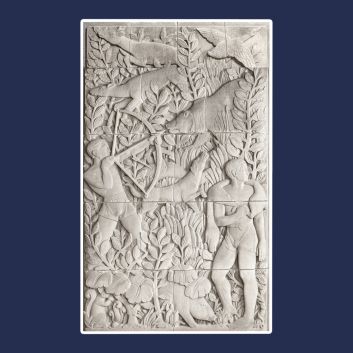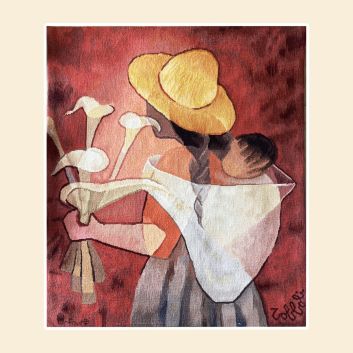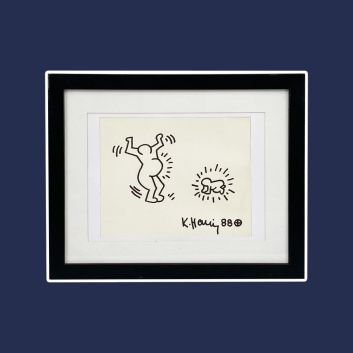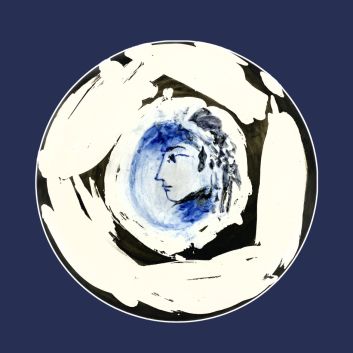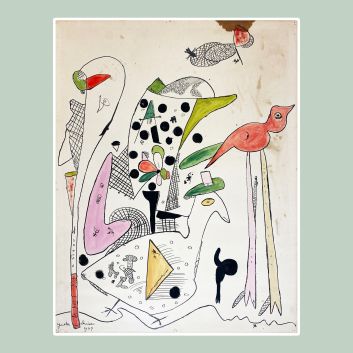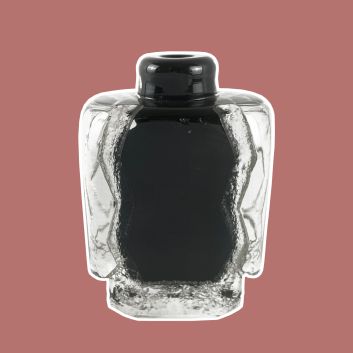Rating and value of works, drawings, paintings by Keith Haring

American painter and visual artist Keith Haring is considered one of the pioneers of contemporary art.
If you own a work by or based on the artist Keith Haring and would like to know its value, our state-approved experts and auctioneers can advise you.
Our specialists will carry out a free appraisal of your work, and provide you with a precise estimate of its current market value.
Then, if you want to sell your work, we'll point you in the right direction to get the best possible price for it.
Artist's rating and value
Considered one of the leaders of contemporary art, Keith Haring exhibited extensively during his lifetime. As a result, he has already established an immense reputation and presence on the art market.
Today, his value continues to rise, and the artist has established himself as a sure bet on the auction market. A work signed by Keith Haring can fetch millions of euros at auction.
An acrylic, for example, sold for €5,102,720 at Sotheby's in 2017.
Order of value from the most basic to the most prestigious
Technique used | Results |
|---|---|
Tapestry | From €135 to €7,000 |
Photography | From €90 to €24,390 |
Ceramics | From €100 to €32,480 |
From €5 to €830,000 | |
Sculpture - volume | From €10 to €2,908,950 |
Drawing | From €50 to €4,009,530 |
Paint | From €100 to €5,102,720 |
Response in less than 24h
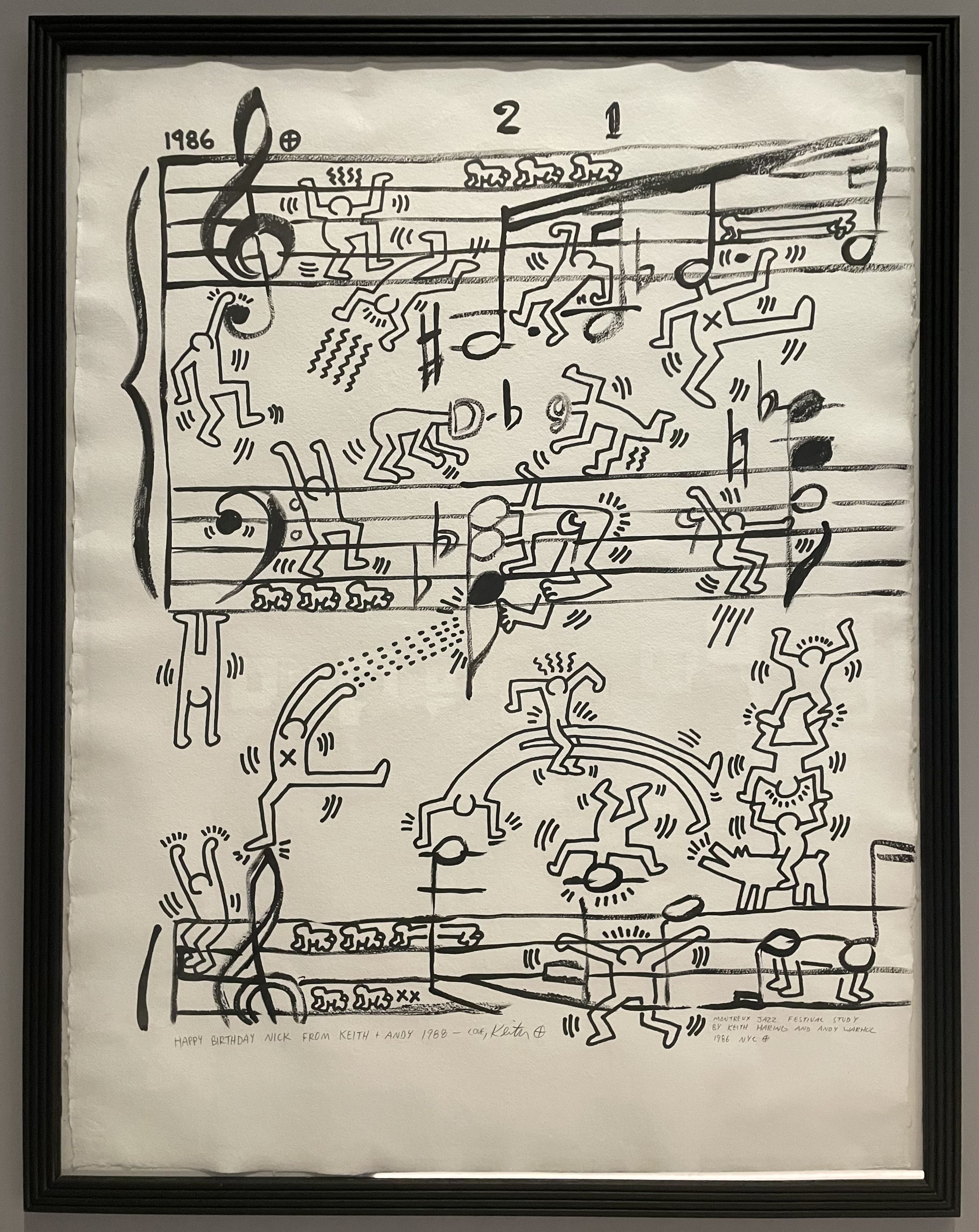
Keith Haring's style and technique
Keith Haring developed an instantly recognizable style, marked by clean lines, simple shapes and bright colors.
His works, often created on urban surfaces such as the walls of New York's subways, are in the tradition of street art movements, but quickly transcend this framework to enter the galleries.
Influenced by Pop Art and graffiti, Haring uses thick outlines to delineate his figures, creating dynamic compositions where stylized characters, animals and symbols meet.
One of the essential characteristics of his technique is the absence of depth or traditional perspective. His figures are flat, their movements suggested by simple lines and graphic flashes that surround the bodies, as if to represent energy or emotion.
His fluid lines recall the aesthetics of cartoons or pictograms, giving his work an immediate accessibility.
The artist also draws inspiration from primitive art, in particular the geometric motifs found in the geoglyphs of the Nazca desert.
These influences, which he fuses with popular culture, enable him to create a universal visual language, in which the themes of life, death, love and sexuality are addressed iconographically.
Her technique enables her to explore all types of support, from murals to sculptures and clothing.
Haring, by using accessible materials such as acrylic paint and choosing public supports, sought to democratize art.
His use of bright colors, often applied in solids, reflects a resolutely modern optimism, despite the sometimes serious themes he tackles, such as the fight against AIDS or social inequality.
Keith Haring as seen by Christian Schmitt
Keith Haring, his life, his work
Keith Allen Haring was born in 1958 in Pensylvania. He grew up in a strict, disciplined family. At the age of 18, he began taking advertising design classes in Pittsburgh.
This training didn't suit him, and he preferred to devote himself entirely to producing drawings. He soon felt the need to move to New York, where he enrolled at the School of Visual Art.
He met and socialized with other East Village artists, notably Jean-Michel Basquiat and Andy Warhol. They all exhibited in this part of New York, especially at the Mudd Club and Club 57, where the radiant baby was born.
Throughout his life, he produced drawings, but explored all possible media, and in New York produced numerous graffiti works on buildings and public places around the city.
Haring stands out for his small, round-rimmed figures, often highly colored and diverted by black. Small lines surround them to represent life, joy and hope.
Like Pierre Soulages, he draws inspiration from much older, even primitive works of art to produce his drawings and imagine his figures.
The geoglyphs of the Nazca desert in southern Peru exerted a great influence on his work, and the stylistic proximity is easy to guess.
In 1982, he had his first solo show at the Tony Shafrazi Gallery. It was a great success, enabling him to take part in the Whitney Museum Biennial and the Sao Paulo Biennial.
He also exhibited in Venice and Paris, alongside artists such as Robert Combas. At the same time, Haring continued to paint graffiti frescoes, the most famous being on the Berlin Wall and inside the Necker hospital.
He was commissioned to design the label for Château Mouton de Rothschild, 1988 vintage, and also created works for churches, notably a triptych gilded in white gold, which was divided between Paris and New York. Part of this triptych can be seen in the church of Saint Eustache.
Keith Haring died in 1990 after battling HIV and setting up a foundation to advance research and support sufferers.
Focus on Radiant Baby, Keith Haring, 1982
Keith Haring's simple yet striking work brilliantly embodies the spirit of his commitment to social causes. The Radiant Baby, the composition's central figure, radiates childlike energy, evoking innocence and vitality.
The confident black lines define a stylized silhouette, while the rays of light that surround it create a sensation of movement, like an explosion of joy. Each stroke seems to vibrate with a life of its own, suggesting a breath of enthusiasm that transcends the canvas.
The colorful background, often filled with bright hues, acts as a dynamic frame, accentuating the contrast between the child and the environment. This explosion of color recalls popular culture, integrating the viewer into a playful and engaging universe.
With this powerful symbol, Haring not only celebrates childhood, but also highlights crucial issues such as the fight against AIDS and social inequality. The Radiant Baby thus becomes a cry from the heart, an invitation to hope and solidarity.
This pictorial gesture, typical of the artist, reveals a liberation of form, while conveying a universal message. Haring manages to transform a simple figure into an emblem of resistance and light, a reminder that art can be both accessible and deeply meaningful.
In conclusion, this work by Keith Haring testifies to his unwavering commitment to free expression and humanity. It captures the raw energy of youth and embodies a vision of the world where art and social commitment meet, creating a work vibrant with hope and solidarity.
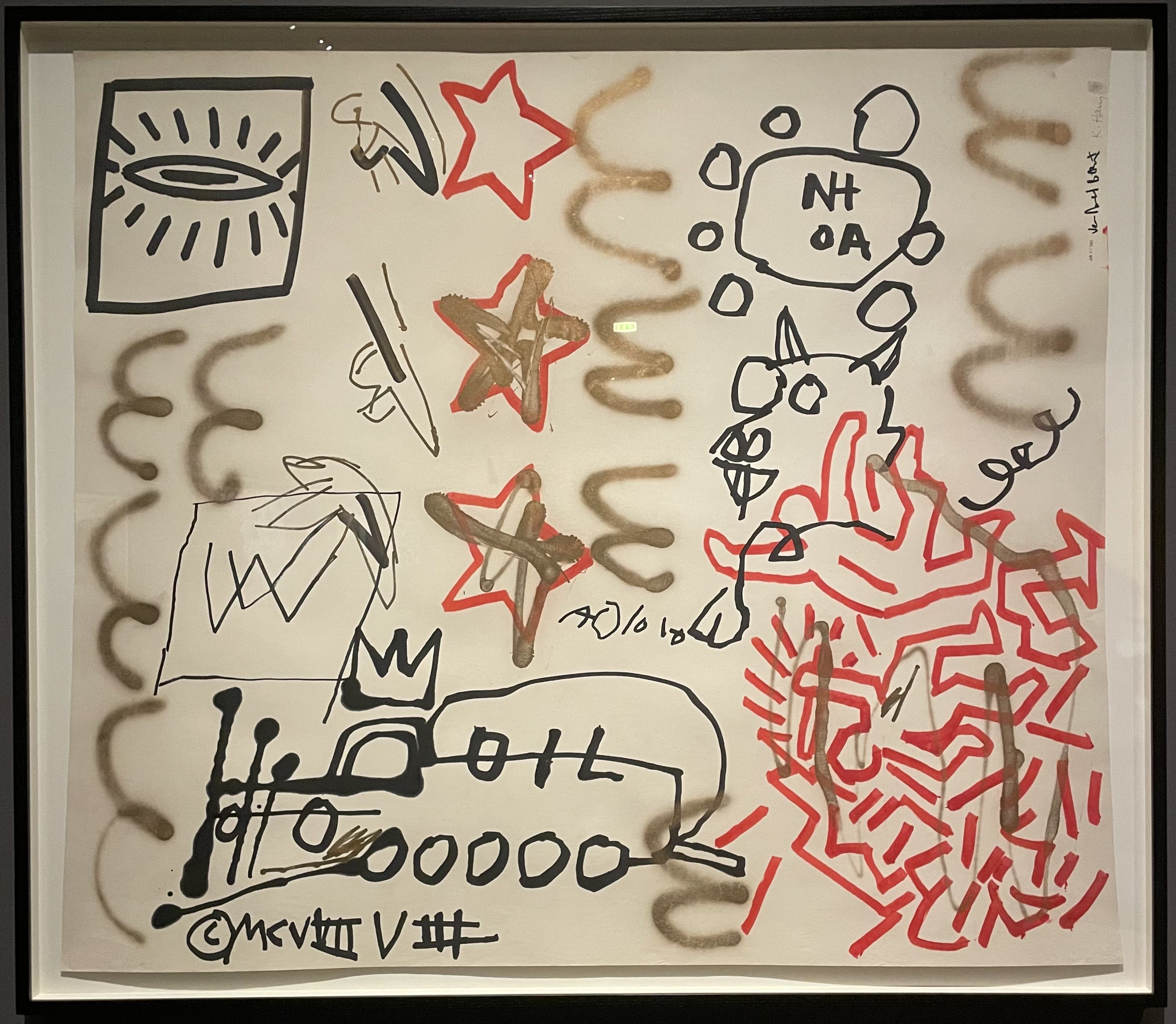
Keith Haring's posterity and legacy
Keith Haring's works are known the world over and are a true symbol of contemporary art.
His colorful figures and radiant baby are no longer confined to the walls of New York, but are reused in fashion, accessories and even interior design.
The graphic simplicity of his characters, surrounded by vibrant lines, is now recognized and identifiable at first glance.
Haring not only left his mark on art through his style, but also through his commitment to humanitarian causes. An activist against racism, homophobia and apartheid, he used his art to raise awareness.
The Keith Haring Foundation, created shortly before his death, continues his work today by supporting research into AIDS, a disease he personally fought against. This commitment makes Haring not only an artist, but also a true activist.
A regular collaborator of Jean-Michel Basquiat, Keith Haring built bridges between art and the social struggles of his time.
His unique style, now anchored in the world's visual culture, continues to inspire new generations of artists, and his works, present in major museums, bear witness to his lasting impact on contemporary art.
His signature
Although there are variations, here is a first example of its signature:
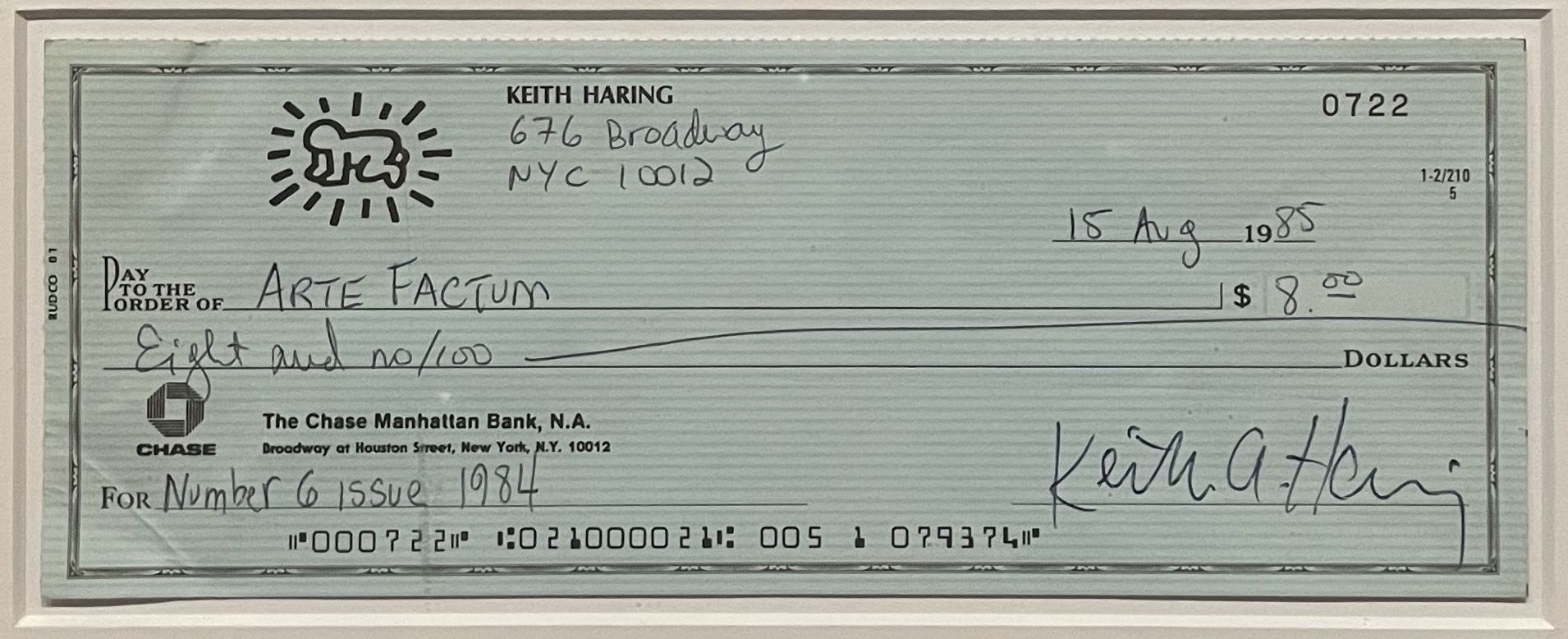
Our team will be happy to help you identify your artwork.
Appraising your property
If you own a Keith Haring painting, feel free to request a free appraisal by filling in our online form.
A member of our team of experts and certified auctioneers will contact you to provide an estimate of the market value of your work.
If you are considering selling your work, our specialists will also guide you through the various alternatives available to obtain the best possible price, taking into account market trends and the specific features of each work.
Response in less than 24h
Related topics
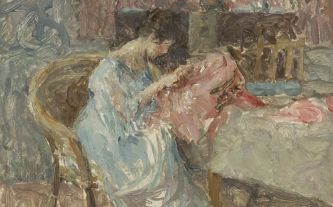
Rating and value of works, drawings, paintings by Emile Bogg...
Emile Boggio is a Franco-Argentinian Impressionist painter who produced drawings and paintings that are highly prized at auction. Estimated in 24h.
Read more >
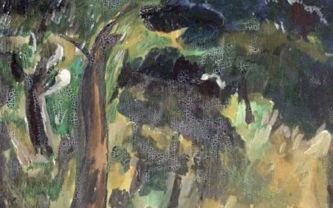
Rating and value of works of art, drawings, paintings...
André Dunoyer de Segonzac is a twentieth-century neo-realist artist who produced paintings, watercolors and prints that are highly prized and sought-after.
Read more >
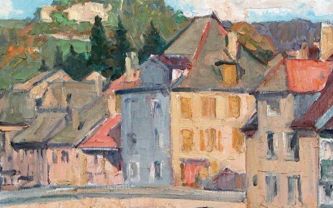
Cote et valeur 2024 des tableaux, dessins, peintures de Robe...
Robert Fernier is a twentieth-century landscape painter whose works are highly regarded and valued at auction.
Read more >
Secure site, anonymity preserved
State-approved auctioneer and expert
Free, certified estimates
